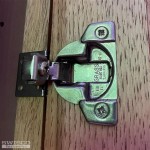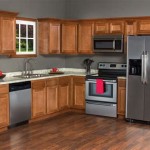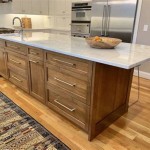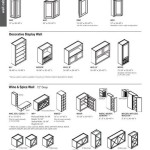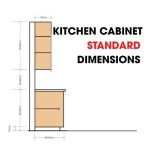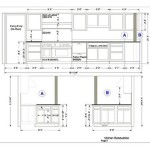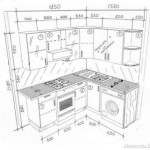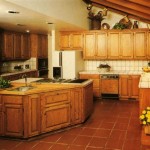Angled End Kitchen Cabinets: A Unique and Functional Design Element
Angled end kitchen cabinets, also known as corner cabinets with angled doors or angled end panels, are a distinctive and versatile design feature that can significantly enhance both the aesthetic appeal and functionality of a kitchen. These cabinets differ from traditional rectangular cabinets by incorporating an angled shape, typically a 45-degree angle, at one or both ends, allowing them to fit seamlessly into corner spaces. This unique design not only maximizes storage capacity by utilizing an often-wasted corner area but also adds a touch of visual interest and dynamism to the overall kitchen layout.
Advantages of Angled End Kitchen Cabinets
Angled end cabinets offer numerous advantages that make them a popular choice among homeowners and kitchen designers.
1. Enhanced Storage Capacity
One of the primary benefits of angled end cabinets is their ability to maximize storage space. By utilizing the often-underutilized corner area, these cabinets provide a significant amount of additional storage without compromising on floor space. This is particularly beneficial in smaller kitchens or kitchens with limited countertop space, where every inch counts.
2. Improved Accessibility and Functionality
Angled end cabinets are designed for greater accessibility, making it easier to reach items stored in the back corners. The angled doors or panels allow for a wider opening, providing a clear view of the entire cabinet contents. This improved accessibility can enhance the overall functionality of the kitchen, making it easier for users to access and organize their belongings.
3. Enhanced Visual Appeal and Design Flexibility
Angled end cabinets add a unique touch to any kitchen design, breaking away from traditional rectangular shapes and creating a more visually interesting and dynamic space. The angled doors or panels can be used to create a focal point in the kitchen or complement other design elements, such as the countertop or backsplash.
Types of Angled End Cabinets
Angled end cabinets are available in various configurations to suit different kitchen layouts and storage needs.
1. Single-Angle Cabinets
Single-angle cabinets feature an angled end on one side only, creating a slight offset in the corner and maximizing storage capacity. These cabinets are ideal for kitchens where a full corner cabinet is not desired or where space is limited.
2. Double-Angle Cabinets
Double-angle cabinets have angled ends on both sides, creating a complete corner unit. These cabinets offer the most storage space and are particularly beneficial for large kitchens or kitchens with extensive storage needs.
3. Lazy Susan Cabinets
Lazy Susan cabinets are a popular choice for corner storage, as they feature a rotating shelf that allows for easy access to all items. These cabinets are particularly useful for storing bulky or frequently used items, such as pots, pans, or baking supplies.
Considerations for Angled End Cabinets
While angled end cabinets offer numerous advantages, there are a few factors to consider before incorporating them into a kitchen design.
1. Space Requirements
Angled end cabinets require slightly more space than traditional rectangular cabinets, so it's essential to ensure there is sufficient room for the cabinet to open fully without obstructing walkways or other furniture.
2. Cost
Angled end cabinets are often more expensive than standard rectangular cabinets due to their complex design and construction. It's essential to factor in the cost of these cabinets when planning a kitchen remodel or renovation.
3. Customization Options
Due to their unique design, angled end cabinets may have limited customization options compared to standard cabinets. It's important to discuss specific customization needs with a kitchen designer or cabinet manufacturer to ensure they can accommodate your requirements.
Angled end cabinets are a versatile and functional design element that can significantly enhance the storage capacity, accessibility, and visual appeal of a kitchen. By carefully considering the advantages, types, and considerations associated with these cabinets, homeowners and designers can effectively integrate them into their kitchen layouts to create a truly functional and aesthetically pleasing space.

Before And After Elegant Kitchen Makeover Remodel Layout Small White Remodeling

13 Angled Cabinet Ideas Kitchen Design Cabinets Remodel

Best Kitchen Cabinet Storage And Organization Ideas Cliqstudios Examples Cabinetry Wall Cabinets

13 Angled Cabinet Ideas Kitchen Design Cabinets Remodel

Lower Angled End Cabinet Google Search Kitchen Remodel Plans Design Layout

Angled Kitchen Base Units Diy Kitchens

Angled End Cabinet Traditional Kitchen Other By Blue Hill Woodwork Houzz

What Is Base Angle Cabinet Definition Of

Angled End Cabinet Plus Sweet Little Teeny Window Shelf Kitchen Backsplash Designs Custom Cabinets

Gallery Home Decor Kitchen Remodel Small Cabinet Design

